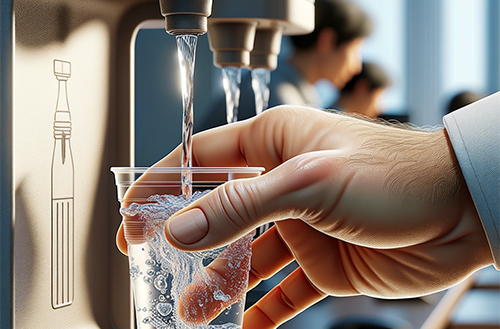
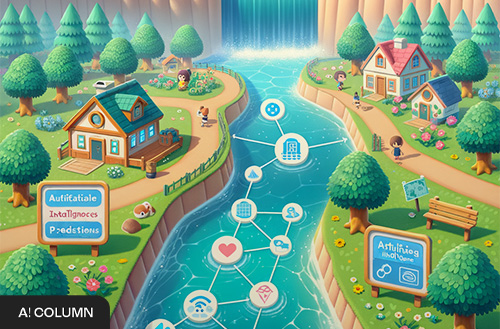
When AI Meets Water
On the Value of Water #4

Columnist
Sun-jin Ha Sustainability Management Center

#INTRO
We are indeed in the midst of an AI revolution these days. AI, or artificial intelligence, refers to technology designed to give computers human-like intelligence. We are already incorporating AI into our work at the company. It's common to use AI search tools when editing photos or videos, translating foreign language materials, creating Excel functions, or handling various tech stacks. Personally, I can't imagine a time before GPT - AI has made our lives smarter and more efficient. Moreover, AI is having a positive impact on the environment.
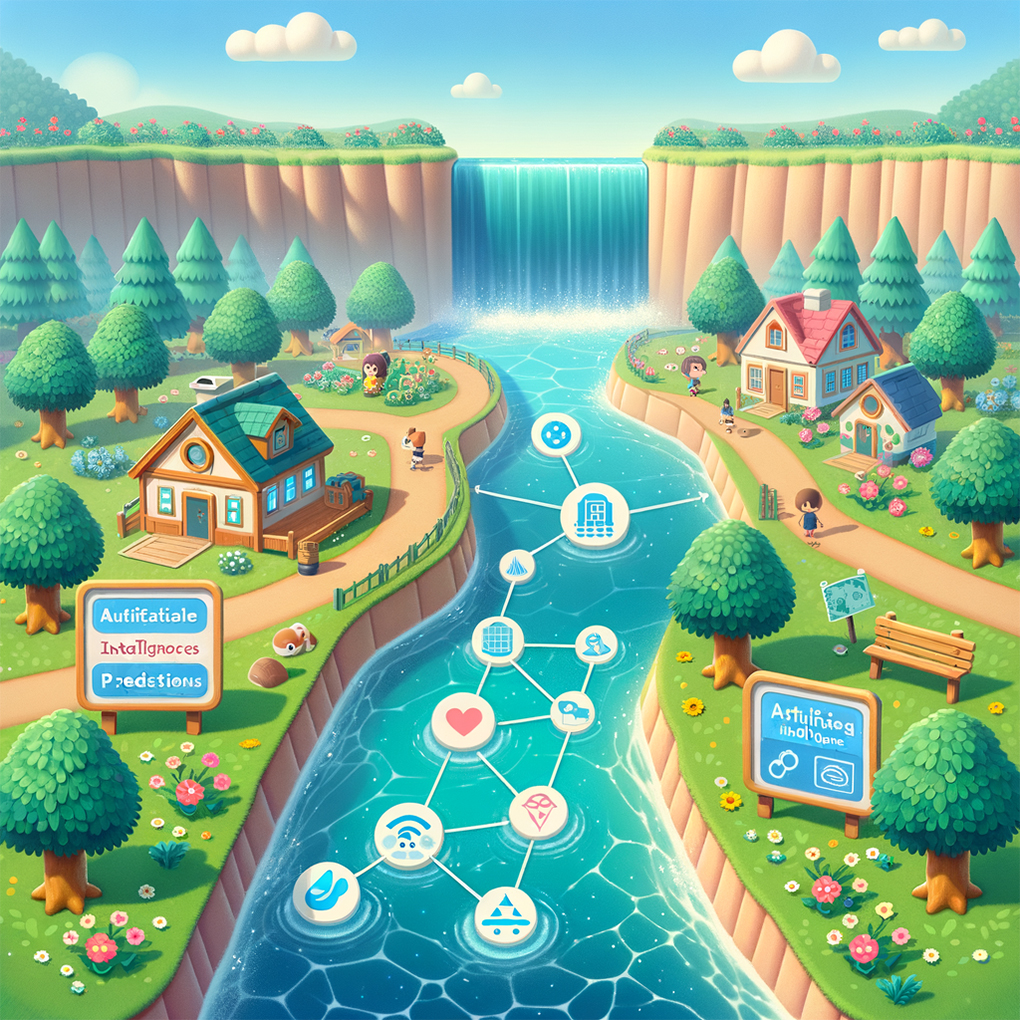
The Convergence of Water and AI / Source: DALL-E
As a result, companies have begun sponsoring individuals, schools, and businesses that apply AI technology to environmental conservation and nature protection. Microsoft operates an Earth Environment AI project utilizing its AI technology, supporting activities that extend the benefits of AI to environmental domains under the slogan "AI for Earth." It's also noteworthy that Amazon CEO Jeff Bezos announced the AI Grand Challenge for Climate and Nature through the BEZOS EARTH FUND, which he established with a $8.9 billion endowment. Given that it's been nearly 70 years since the term "AI" was coined and we began exploring its potential, it seems natural that a continuous stream of innovative ideas has been proposed for improving our lives and ecosystems. Today, I'd like to introduce you to AI technology trends related to water - the theme of my column - and discuss the role water plays at the heart of the AI world.
1 AI Flood Prediction: An Opportunity Realized
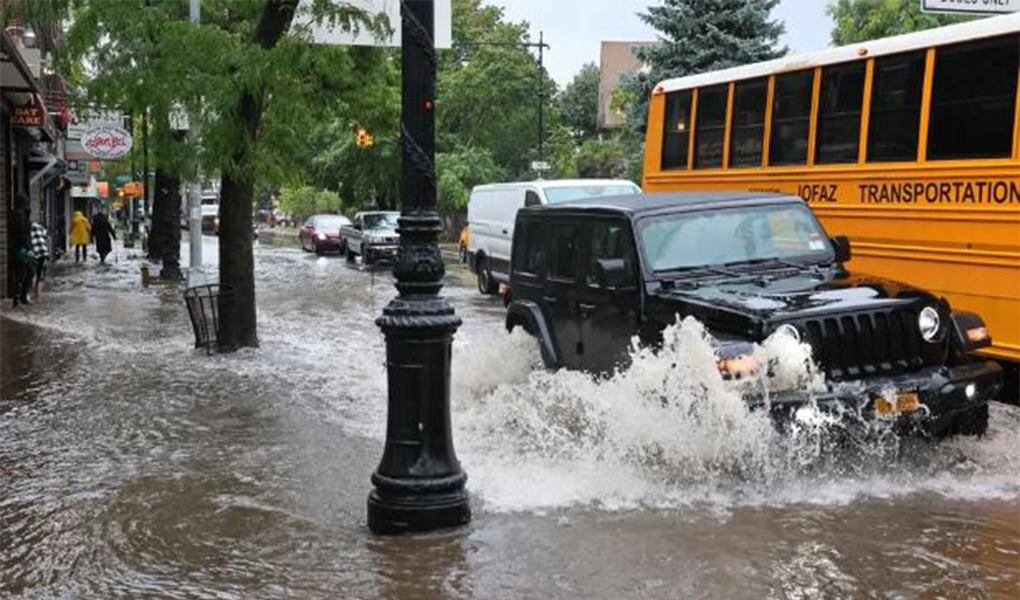
Flooded streets in New York, September 2023 / Source: Forbes
Our journey to autumn typically involves enduring early summer monsoons and floods, followed by sweltering heat waves and tropical nights throughout summer, and finally weathering a typhoon or two as they make their way north around early fall. The East Asian region, encompassing Korea, China, and Japan, faces these extreme weather phenomena from June to September. Korea suffered from prolonged tropical nights this summer, with no corner of the country spared from the oppressive heat. The severity of summer weather changes has become increasingly palpable in recent years, and numerous studies indicate a rise in both the frequency and intensity of natural disasters over the past few years. In the United States, according to the Fifth National Climate Assessment report released in 2023, the country experiences extreme weather events causing at least $1 billion in damages every three weeks. As claims for natural disaster compensation increased, insurance companies found themselves shouldering a significant financial burden. Over the past 30 years, while global GDP grew at an average annual rate of 2.7%, insurance losses surged by an average of 5.9% annually. The greatest challenge for insurers was to develop services that could provide insurance even to high-risk clients while minimizing insurance losses, all based on accurate information. 7Analytics, a flood information company headquartered in Norway, is offering a solution to this conundrum through its AI-powered high-precision flood and landslide prediction model. Combining hydrology, geology, and data science enables asset owners and insurers to assess the risks of floods and landslides accurately.

Predicted flood situation in Ithaca City using the Digital Flood Twin program conducted by New York State and 7Analytics
Source: 7Analytics Vimeo
7Analytics recently collaborated with Ithaca, New York - a city renowned for its concentration of high-value assets - on the Digital Flood Twin project. Ithaca is famous for being home to the prestigious Cornell University and for being the first city in the United States to commit to net-zero emissions by 2030. However, the downtown area of Ithaca was at risk of flooding. In considering how to adapt to these climate changes, Ithaca decided to utilize digital twin technology. A digital twin refers to a digital model that identically replicates a real-world system or process in a virtual environment. It simulates and analyzes real-time data in a virtual environment. This technology identified flood-vulnerable locations in the Ithaca area and mapped out emergency service routes to minimize damage in the event of a disaster. By leveraging AI technology in this way, we can preemptively visualize what might occur in underground water channels - typically invisible to the naked eye - during extreme rainfall events and effectively manage rivers and dams in disaster situations.
2 Measuring Groundwater from Space

NASA's GRACE satellite / Source: NASA Gallery
Did you know many of those twinkling lights in the sky are artificial satellites? As of 2022, 12,293 satellites have been launched into the sky, with 8,261 still orbiting the Earth. Satellites typically support telephone and internet services and monitor weather forecasts and climate change. Evolving beyond these traditional functions, satellites are now being used for disaster management, geology, and groundwater monitoring. In 2002 and 2018, NASA launched the GRACE (Gravity Recovery and Climate Experiment) satellites to precisely measure changes in Earth's gravitational field and monitor mass distribution changes on the Earth's surface. The goal was to monitor changes in various climate systems, including the water cycle, atmosphere, oceans, and glaciers. The data obtained has enabled predictions of changes in various water resources. For instance, it can calculate the mass of polar glaciers to predict sea-level rise or detect changes in soil weight to determine if moisture is suitable for agriculture.
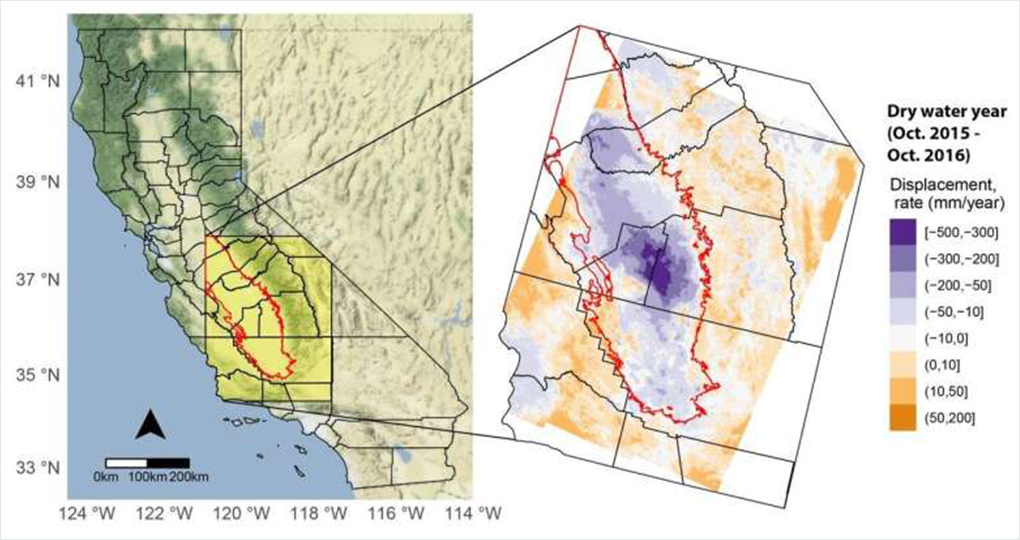
Central Valley Groundwater Prediction / Source: Water Network
Researchers thought this technology could aid basin regions struggling with agricultural water supply due to groundwater shortages. The Tulare Basin Central Valley, located between San Francisco and Los Angeles, accounts for only 1% of the total U.S. farmland but is dubbed the "treasure trove of crops," producing 40% of the nation's total harvest of fruits, vegetables, and nuts. However, due to insufficient water compared to rainfall, it had to rely on groundwater for over 80% of agricultural water during drought periods, with conditions so dire that water had to be pumped from depths of about 1,000 meters underground. However, utilizing satellite data and AI made it possible to predict how various crops and soil layers absorb water differently in distinct patterns and at what rate aquifers are replenished seasonally. With the development of high-resolution data-based numerical models, it is expected to aid areas in urgent need of groundwater management.
3 Are Data Centers Water Guzzlers?
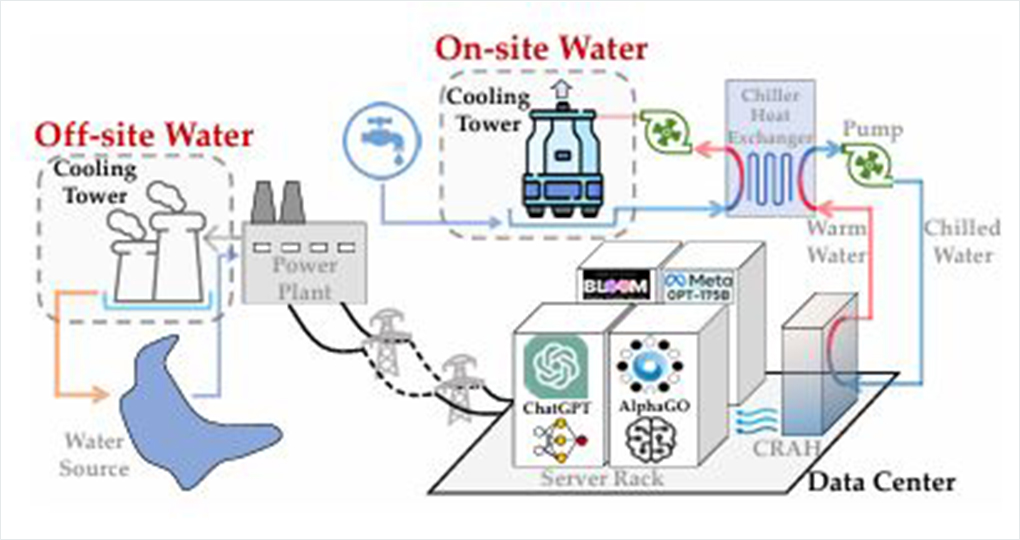
Water usage in data centers / Source: Making AILess
The two examples above examined how AI provides virtual modeling for flood situations and supports groundwater prediction and securing in drought-prone areas. However, have you heard that while AI helps with water resource management and prediction, it's also a cause of rapidly increasing water consumption? This ironic relationship between water resources and AI stems from power usage and heat generation. The advancement of AI technology is closely linked to the operation of large-scale data centers, which consume enormous amounts of electricity and use large quantities of water in cooling towers to regulate the temperature of these centers. Just as our laptops or phones become hot when used for long periods due to heat generation, high-performance computing equipment needed to run AI models requires cooling systems because of its high power consumption. According to Google's 2024 Environmental Report, in 2023, Google used a staggering 6.1 billion gallons (23 billion liters) of water for cooling data centers (water usage = water withdrawal - water discharge). This was a 14% increase from the previous year, primarily attributed to increased cooling demands due to higher power consumption in data centers. Similarly, Microsoft's 2024 Environmental Sustainability Report confirmed that water usage has increased for four consecutive years due to business growth, while Meta's 2023 Sustainability Report showed that water withdrawal at Meta's data centers has increased for six consecutive years.
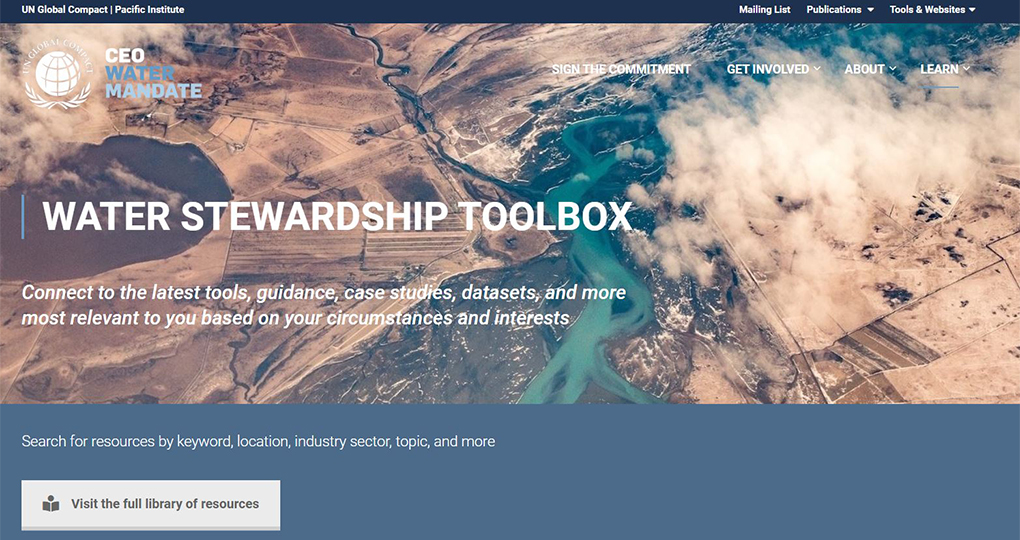
UNGC Water Stewardship Toolbox / Source: Ceo Water Mandate
According to a paper published in 2023 by Professor Ren's team at UC Riverside, they predicted that by 2027, the amount of water used by generative AI data centers in the United States will approach nearly half of the total water usage in the United Kingdom. Companies owning data centers have voluntarily committed to implementing water stewardship, considering the severity of the situation. Water Stewardship, simply put, means a commitment to use and manage water resources socially equitably for environmentally sustainable water management. This can apply to businesses, local communities, and farmers and includes preemptively identifying water risks or stress in each area to minimize economic losses. The UN Global Compact, the world's largest voluntary corporate citizenship initiative, also provides the latest case studies and data related to water resource usage. Google has set a goal to return 120% of the water it uses to nature, such as groundwater or surface water, by 2030 and is disclosing its implementation status. To achieve this, they are utilizing recycled water for cooling data centers. Microsoft has promised to achieve not just water use net zero but water-positive by 2030 and continues to invest in solutions such as designing direct cooling for heat-generating chips. Additionally, IT companies have developed and are managing the Water Use Effectiveness (WUE) index, which is the annual water usage (L) divided by energy usage (kWh). Amazon AWS data centers are monitoring this WUE figure to allow operators to receive automatic notifications, as it's easy to compare cooling, humidity control, and usage.
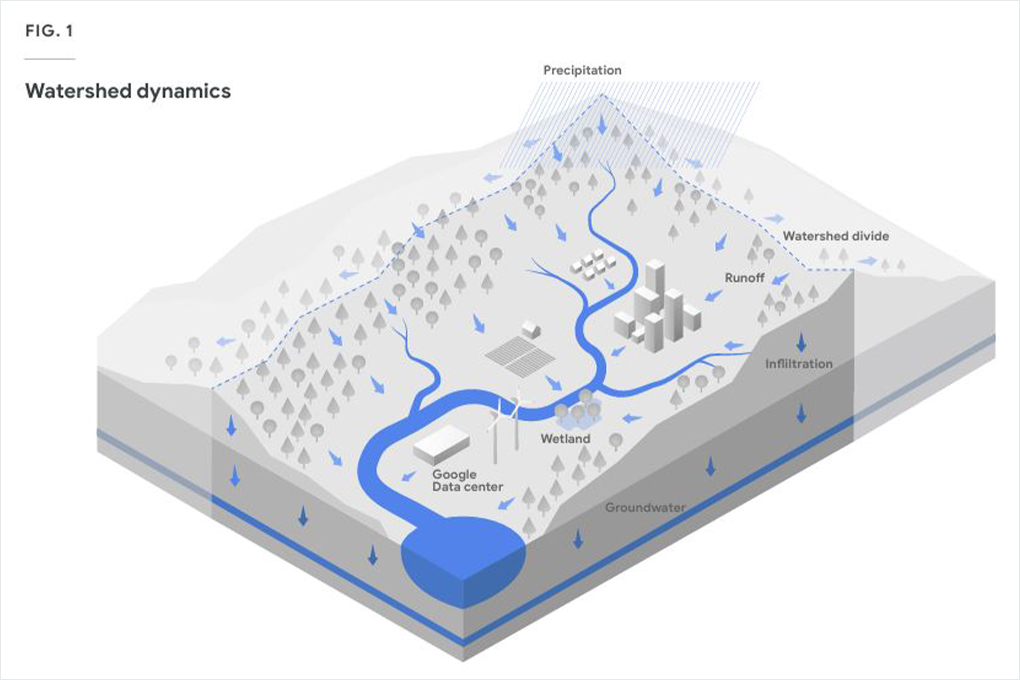
Google Water Stewardship - Watershed dynamics
/
Source: Gstatic.com
#OUTRO
We've looked at AI's role in preparing for floods and droughts beyond recognizing faces and remembering voices. Thanks to AI's development, our lives will likely become safer and more abundant than before, but we cannot overlook the enormous amount of water consumption hidden behind this progress. It seems that to continue enjoying the convenience of technology, we need to raise awareness about environmental protection and water resource management. In the next column, I'll return with useful and interesting trivia about water you can use for a lifetime. Don't forget to solve the preview quiz below!
QUIZ 1)
This summer, you've decided to go swimming with your cute nephew. For safety, you need to buy a life jacket. Which of the following is the most suitable life jacket?
1) A light pink life jacket with the popular character Heartsping drawn on it
2) A sky blue life jacket with cute baby shark characters drawn on it
3) Just a plain red life jacket
-
Like
0 -
Recommend
0 -
Thumbs up
1 -
Supporting
1 -
Want follow-up article
0





